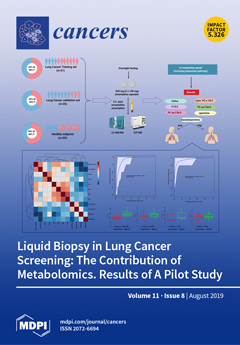Background: Remodeling of extracellular matrix through collagen degradation is a crucial step in the metastatic cascade. The aim of this study was to evaluate the potential clinical relevance of the serum collagen degradation markers (CDM) C3M and C4M during neoadjuvant chemotherapy for breast cancer.
Methods: Patients from the GeparQuinto phase 3 trial with untreated HER2-positive operable or locally advanced breast cancer were enrolled between 7 November 2007, and 9 July 2010, and randomly assigned to receive neoadjuvant treatment with EC/docetaxel with either trastuzumab or lapatinib. Blood samples were collected at baseline, after four cycles of chemotherapy and at surgery. Cutoff values were determined using validated cutoff finder software (C3M: Low ≤9.00 ng/mL, high >9.00 ng/mL, C4M: Low ≤40.91 ng/mL, high >40.91 ng/mL). Results: 157 patients were included in this analysis. At baseline, 11.7% and 14.8% of patients had high C3M and C4M serum levels, respectively. No correlation was observed between CDM and classical clinical-pathological factors. Patients with high levels of CDM were significantly more likely to achieve a pathological complete response (pCR, defined as ypT0 ypN0) than patients with low levels (C3M: 66.7% vs. 25.7%,
p = 0.002; C4M: 52.7% vs. 26.6%,
p = 0.031). Median levels of both markers were lower at the time of surgery than at baseline. In the multivariate analysis including clinical-pathological factors and C3M levels at baseline and changes in C3M levels between baseline and after four cycles of therapy, only C3M levels at baseline (
p = 0.035, OR 4.469, 95%-CI 1.115–17.919) independently predicted pCR. In a similar model including clinical-pathological factors and C4M, only C4M levels at baseline (
p = 0.028, OR 6.203, 95%-CI 1.220–31.546) and tumor size (
p = 0.035, OR 4.900, 95%-CI 1.122–21.393) were independent predictors of pCR. High C3M levels at baseline did not correlate with survival in the entire cohort but were associated with worse disease-free survival (DFS;
p = 0.029, 5-year DFS 40.0% vs. 74.9%) and overall survival (OS;
p = 0.020, 5-year OS 60.0% vs. 88.3%) in the subgroup of patients randomized to lapatinib. In the trastuzumab arm, C3M did not correlate with survival. In the entire patient cohort, high levels of C4M at baseline were significantly associated with shorter DFS (
p = 0.001, 5-year DFS 53.1% vs. 81.6%) but not with OS. When treatment arms were considered separately, the association with DFS was still significant (
p = 0.014, 5-year DFS 44.4% vs. 77.0% in the lapatinib arm;
p = 0.023, 5-year DFS 62.5% vs. 86.2% in the trastuzumab arm).
Conclusions: Collagen degradation markers are associated with response to neoadjuvant therapy and seem to play a role in breast cancer.
Full article






